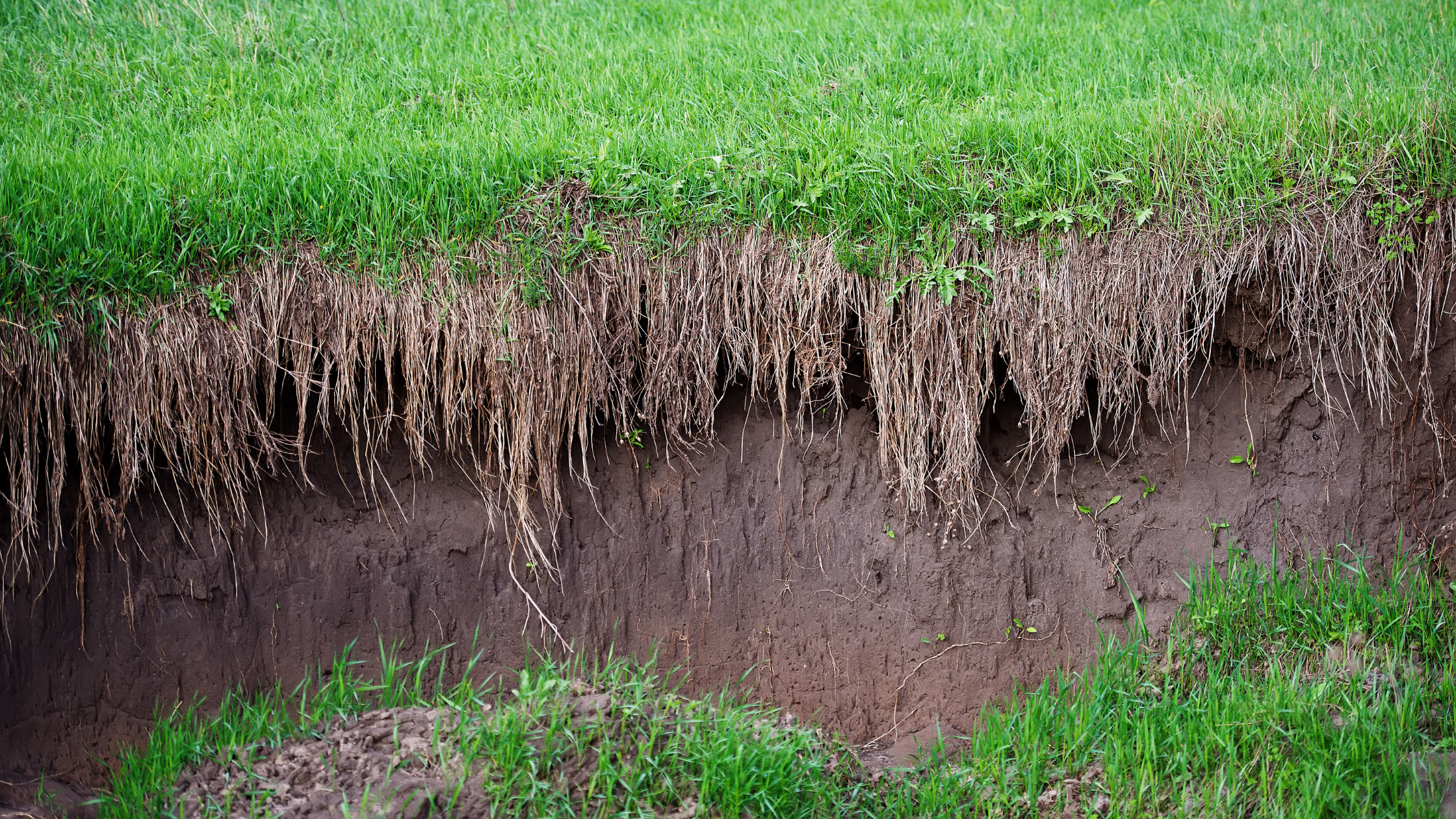Erosion issues cause a mess and risk damage to buildings and surrounding structures. Various erosion control techniques and products, particularly for large-scale commercial projects, have environmental impacts worth noting. Minick Materials is here to provide erosion control solutions for your commercial projects.
The Importance of Erosion Control
Let’s first define erosion. Think back to those science class diagrams! Erosion is a geological process in which materials like soil, rocks, sediments, etc., are worn away and transported over time by natural forces like water, wind, or poor management.
Now that we understand erosion let’s discuss why erosion control is important. The answer is simple: It helps protect the environment, maintain water quality, and preserve soil and landscapes. Erosion control prevents water quality from degrading by preventing sediments from entering waterways, which affects aquatic life and water resources. It also helps maintain soil nutrients and organic matter and protects natural ecosystems and biodiversity.
Challenges of Erosion Control in Large-Scale Commercial Projects
The importance of erosion control solutions for the environment is just as important for commercial projects. Some examples include:
Construction Sites
Construction sites are vulnerable to erosion due to vegetation removal, grading, and the exposure of bare soil. This typically involves large areas of disturbance, increasing the risk of soil loss and sediment runoff. We help plan projects with the end goal of building long-term, sustainable environments.
Highway Embankments
Due to steep slopes, a lack of immediate vegetation, heavy rainfall, and constant traffic flow, it can be difficult to control soil compaction and water infiltration, further causing erosion issues.
Riverbanks
It’s obvious that riverbanks are prone to erosion due to the constant water flow. Large-scale commercial projects near rivers can disrupt the natural stability of the river, increasing the risk of erosion.
Understanding Erosion Mechanisms
There are various types of erosion; however, wind erosion and water are the main types around large-scale commercial projects. Changing the land levels through grading leads to erosion, which can harm the environment, run soil quality, cause water pollution, and impact both plants and animals.
Water erosion mechanisms include splash erosion, the impact of raindrops on soil; sheet erosion, the removal of thin soil layers; valley or stream erosion, the deepening of valleys and streams; and gully erosion and subsurface flow.
Wind erosion mechanisms include abrasion, deflation, and attrition. Abrasion occurs when wind-blown particles wear down surfaces; deflation occurs when wind removes loose particles like sand and silt; and attrition occurs when particles break down during transport, becoming smaller and more rounded.
Erosion Control Solutions & Products
While various erosion control solutions exist, such as large-scale aggregate (Riprap) and Gabion baskets for riverbanks, compost can be a highly effective solution in commercial applications. Compost is known to slow down and infiltrate water into the soil, especially with erosion control methods like compost blankets, socks, berms, and green infrastructure applications. These methods improve water quality by reducing the amount of stormwater that enters waterways. Let’s dive in on how these products work:
Compost Blanket
A compost blanket is a layer of loosely applied compost placed on top of the soil in disturbed areas to control erosion and retain sediment from sheet flow runoff. It replaces sediment and erosion control tools such as mulch, netting, or chemical stabilization. Compost blankets are the easiest and most basic way to help avoid erosion by amending and top-dressing the soil. Improving the soil by these easy and inexpensive methods can make a big difference.
Compost Sock
A compost sock is a mesh tube filled with compost placed perpendicular to sheet flow runoff to control erosion and retain sediment in disturbed areas. The filter sock can replace a sediment and erosion control tool such as a silt fence.
Compost Berm
A compost berm is a dike of compost placed perpendicular to sheet flow runoff to control erosion in disturbed areas and retain sediment. It can be used in place of a sediment and erosion control tool such as a silt fence. The base of the berm is generally twice the height of the berm.
Green Infrastructure
Compost can be paired with green infrastructure in several ways to promote on-site stormwater management. Potential GI/compost projects include compost blankets, infiltration zones, and rain gardens.
Compost Blanket
Erosion Control Planning & Implementation
Erosion control is important for large-scale commercial projects. A plan and ongoing maintenance are key to ensuring the implementation runs smoothly. First, a site assessment must analyze topography, soil, vegetation, and environmental sensitivities.
Then, develop a plan that defines your goals and best management practices (BMPs), such as source control, runoff control, and soil stabilization. Here, you’ll specify products like your compost style, aggregate size, etc., outline construction phasing, and create a maintenance schedule.
It’s important that the implementation is done correctly and monitored by experienced personnel. Obtaining permits, coordinating with the DOT (if applicable), and maintaining thorough documentation are regulatory compliance tasks that must be completed.
Long-term maintenance ensures post-construction stabilization and plans for ongoing maintenance. Proactive planning and diligent execution are essential for successful erosion control.
The Bottom Line
Erosion control is a regulatory requirement to prevent it from being detrimental, but it is also a responsibility for any large-scale commercial project. By formulating plans, utilizing the right techniques and products, and ensuring proper maintenance, we can minimize environmental impact, protect our natural resources, and ensure the long-term success of commercial projects.
Contact Minick Materials
For over 60 years, Minick Materials has helped contractors, builders, architects, and homeowners bring their visions to life. Choosing the perfect decorative rock, building stone, or landscaping materials can be daunting – but we have many resources, inspiration, and advice to help you choose confidently. Contact us today.



.png?width=700&height=394&name=Sally-Brown-3-2%20(1).png)






![All About Soil Compaction: Causes, Challenges & Solutions [A Guide]](https://www.minickmaterials.com/hs-fs/hubfs/Imported_Blog_Media/plants-2411458_1920-1024x683.jpg?width=725&name=plants-2411458_1920-1024x683.jpg)
.webp?width=725&name=AdobeStock_462076409%20(1).webp)